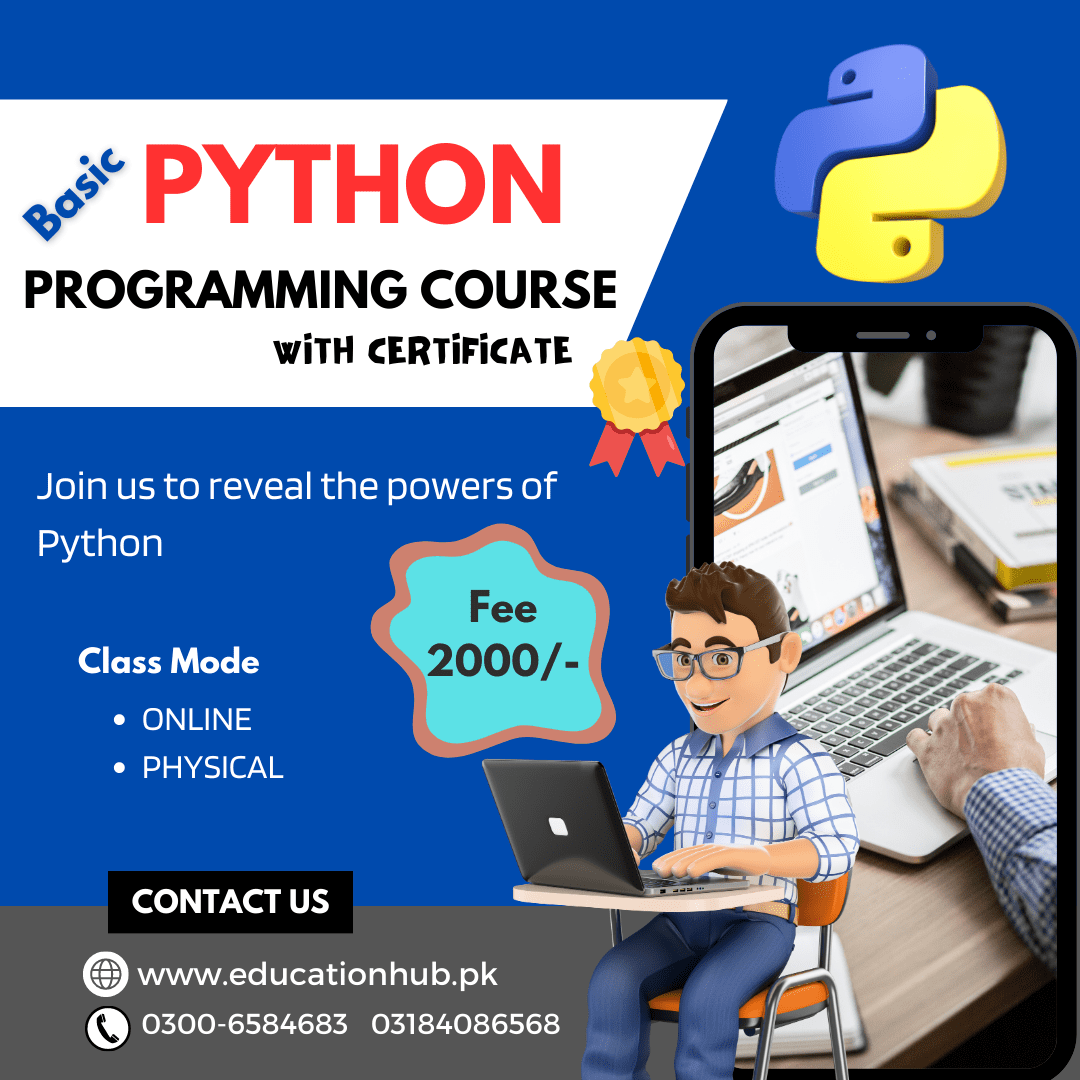BASIC PYTHON PROGRAMMING COURSE
Course Overview
This course is designed to introduce you to the basics of programming using the Python programming language. Python is a popular language used in a variety of applications, including web development, data analysis, and scientific computing. In this course, you will learn the fundamentals of Python programming, including syntax, data types, control structures, functions, and modules.
Course Objectives
By the end of this course, you should be able to:
- Understand What is Programming?
- Understand the basic syntax of Python and write simple programs
- Work with different data types such as numbers, strings, and lists
- Use control structures like if/else statements and loops to control program flow
- Write and call functions to modularize code
- Work with modules to extend the functionality of Python
- Read and write data to files
Course Outline
Module 1: Introduction Comptuer & Programming
- What is Computer
- What is Programming?
- Why Programming is necessary to Learn
- What is Benefits of Python Language
Module 2: Introduction to Python
- Introduction to Python programming language
- Installing Python and setting up a development environment
- Basic Python syntax and data types
- Input/output statements and print formatting
Module 3 Control Structures
- Conditional statements (if/else)
- Loops (for/while)
- Nesting control structures
Module 4: Functions
- Introduction to functions and modular programming
- Defining functions and calling functions
- Function parameters and arguments
- Recursive functions
Module 5: Lists and Tuples
- Lists and tuples data types
- Accessing elements in a list or tuple
- Slicing and indexing lists and tuples
- List and tuple methods
Module 6: Dictionaries
- Dictionaries and dictionary methods
- Accessing dictionary elements
- Modifying and deleting dictionary elements
- Iterating over dictionaries
Module 7: Files
- Reading and writing text files
- Opening and closing files
- Working with file paths and directories
- Exception handling in file I/O
Module 8: Modules
- Introduction to modules and libraries
- Importing modules and using built-in modules
- Creating and using custom modules
- Working with third-party modules
Conclusion
This course is designed to provide a solid foundation in Python programming that will allow you to build on your skills and move on to more advanced topics.
Good luck with your studies!


